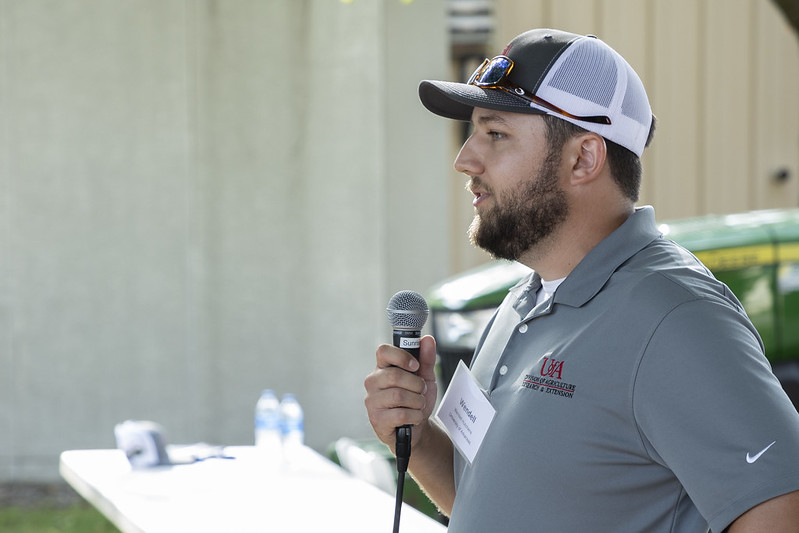Keep lawns green in 2024 with proper fall preparation
Sept. 29, 2023
By Sarah Cato
U of A System Division of Agriculture
Fast Facts:
- Drought, early freezes in 2022 caused widespread issues in Arkansas lawns
- Proper preparation for dormancy is key
- Dormancy preparation includes proper irrigation, raised mowing heights
(324 words)
(Newsrooms: Download photos from the 2023 Turfgrass Field Day)
LITTLE ROCK – Early freezes and long-term drought in 2022 had lasting effects on this year’s lawns. However, much of this heartache can be avoided in 2024 with proper fall preparation.
Wendell Hutchens, assistant professor of turfgrass science for the University of Arkansas System Division of Agriculture, said much of the lawncare woes in 2023 were due to an early cold snap at the end of December 2022, before zoysiagrass and bermudagrass were dormant.
“This past year was an absolute doozy for warm-season grasses,” Hutchens said. “We saw widespread winterkill across Arkansas in bermudagrass and zoysiagrass. A lot of lawns were not fully dormant when we got that cold spell around December 22 and 23.”
This year, Hutchens recommends taking a few steps early to prepare lawns for dormancy. Proper irrigation and higher mowing heights are crucial.
“A big issue we saw last year was depleted root systems due to drought. This left them very susceptible to winterkill. So proper irrigation going into fall dormancy is key,” Hutchens said.
“We want to give the plant the best possible chance, so you can also raise your mowing heights now. If you’re mowing at 2 inches, bump it up to 3 inches.”
Additionally, stopping fertilizer applications in October will help plants go dormant for the cold winter temperatures. Hutchens recommends stopping fertilizer before Oct. 1 for zoysiagrass and before Oct. 15 for bermudagrass. Pre-emergence herbicides for winter annual weeds are okay, but proceed with caution, especially in recently re-sodded areas.
Hutchens’ take home message for lawn care in 2024: buckle up.
“The best we can do is hope for a mild winter, but manage expectations for next spring,” he said. “Areas that were damaged from winterkill this past year are highly susceptible to reoccurring damage this year. Raise those mowing heights, get that grass up to 2.5 or 3 inches and keep it properly irrigated.”
Find resources on lawn and turf care at uaex.uada.edu/yard-garden/lawns.
To learn about extension programs in Arkansas, contact your local Cooperative Extension Service agent or visit www.uaex.uada.edu. Follow us on Twitter and Instagram at @AR_Extension. To learn more about Division of Agriculture research, visit the Arkansas Agricultural Experiment Station website: https://aaes.uada.edu/. Follow on Twitter at @ArkAgResearch. To learn more about the Division of Agriculture, visit https://uada.edu/. Follow us on Twitter at @AgInArk.
About the Division of Agriculture
The University of Arkansas System Division of Agriculture’s mission is to strengthen agriculture, communities, and families by connecting trusted research to the adoption of best practices. Through the Agricultural Experiment Station and the Cooperative Extension Service, the Division of Agriculture conducts research and extension work within the nation’s historic land grant education system.
The Division of Agriculture is one of 20 entities within the University of Arkansas System. It has offices in all 75 counties in Arkansas and faculty on five system campuses.
Pursuant to 7 CFR § 15.3, the University of Arkansas System Division of Agriculture offers all its Extension and Research programs and services (including employment) without regard to race, color, sex, national origin, religion, age, disability, marital or veteran status, genetic information, sexual preference, pregnancy or any other legally protected status, and is an equal opportunity institution.
# # #
Media contact:
Sarah Cato
scato@uada.edu
870-815-9035
